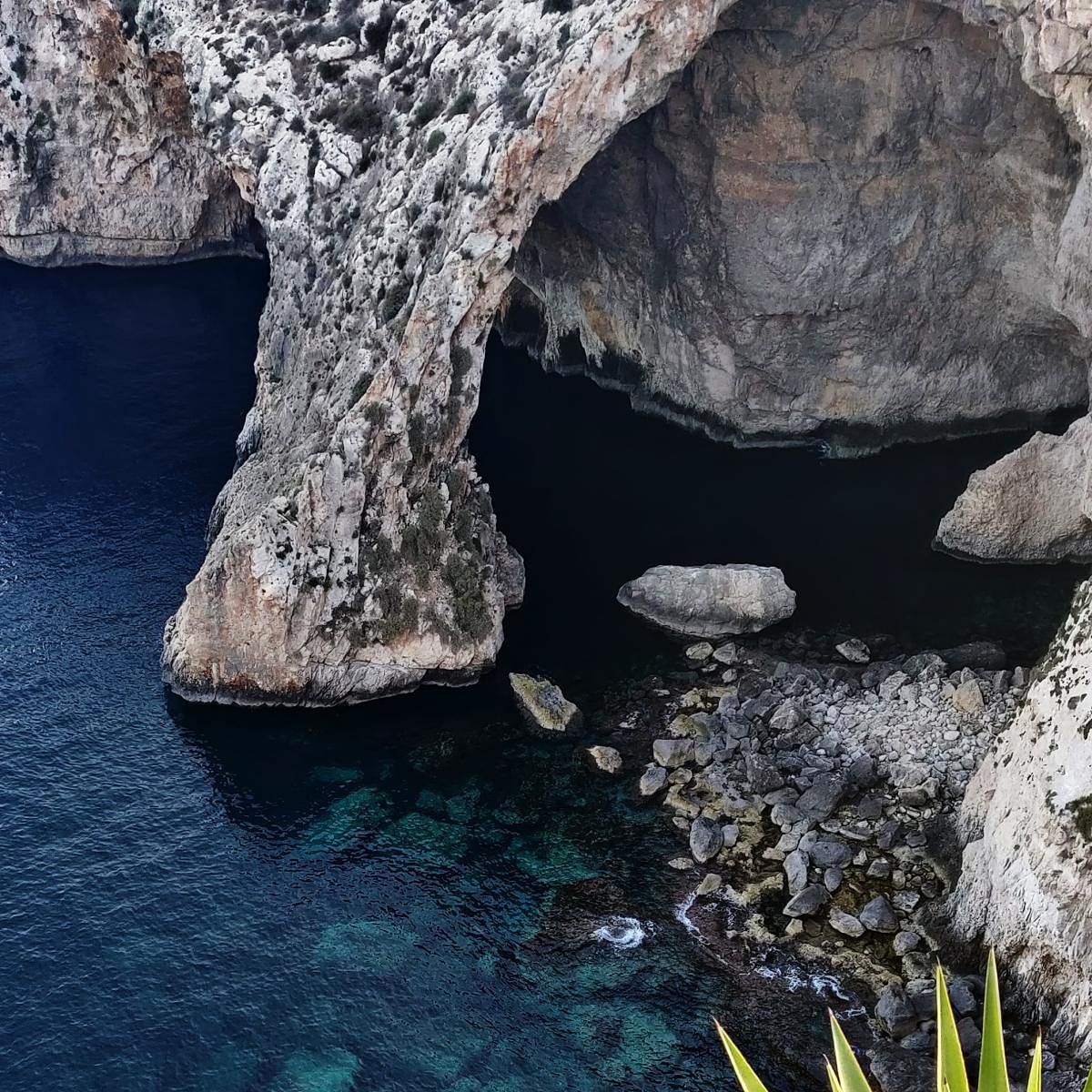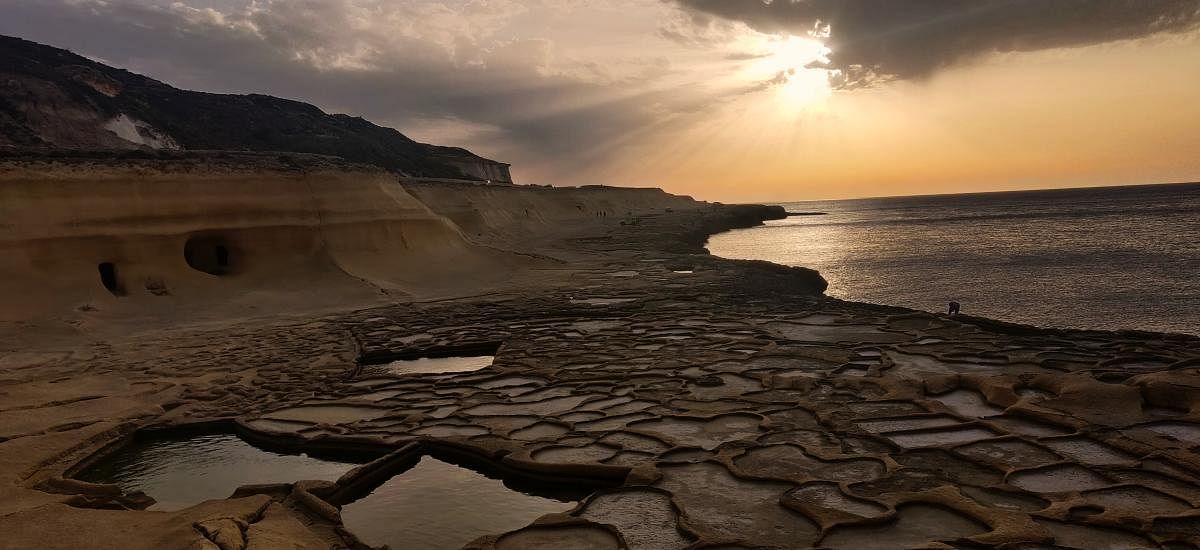

Years of historical identity crisis have sculpted this European country as remarkably diverse. British, Turkish and Italian influences colour sepia-tinted Baroque buildings, flavour the food and find a place in the Maltese language. In the heart of the Mediterranean, between Sicily and the North African coast, spanning 30 km in length and 15 km across, Malta is small enough to profoundly explore and large enough to get lost in.
Having spent a week hopping from cliff to coast, weaving through narrow lanes of ghetto towns, I discovered there’s more to the country than the brutal arid landscapes, seen from above. Even in those, there’s beauty to be found: the naturally eroded salt pans at Xwejni, Gozo appear as a puzzle of puddles, reflecting colours from the sky. For some locals, salt harvesting is a family business, passed down over 300 years. The laborious work involves spring cleaning of the pans, maintaining water levels in summer, scraping out salt and finally moving it into caverns, chiselled out of surrounding coastal walls. In many ways, Malta seemed like a congregation of castaways, who found their home. The urban-posh promenade along the ports of Sliema and St Paul’s Bay, while the fishermen from southern villages, freelance as ferrymen for tourists. At the charming fishing village of Marsaxlokk, a friend and I climbed into a small wooden boat, called luzzu. The boatmen paint them in bright RGB palettes with two eyes on either side of the bow; this keeps with an ancient Phoenician belief that the Eyes of Osiris will ward off evil. After twenty minutes of sailing, we docked at a stratified limestone cove, stripped down and were floating in the clear warm waters of St Peter’s Pool — a popular hangout among local youth for cliff diving. Be it the world-famous Azure Window or the Blue Grotto, Malta isn’t lacking in nature’s architectural marvels. We opted to witness the latter from a viewpoint in the town, Qrendi. From here, just a few winding kilometres away, lie Dingli Cliffs and the ancient city, Mdina. A drive along these cliffs with views of the endless ocean led to a spot on the edge of a grassy overhang where Maltese families had laid out picnic tables, laden with food and drink. As they watched the sky turn pink, purple and finally black, so did we. Laughter, chatter and the sound of waves faded away near fortified Mdina, also known as the Silent City. Steeped in history, this medieval town has had its roster of conquerors — from the Sicilians, Romans, Arabs and Spanish to the order of Knights Hospitaller and finally, the British. Getting lost in Mdina was a treat: shadowed with cantilevered bay windows and brightened with painted wooden doors, winding pathways spidered towards surrounding defensive walls. Our victory of successfully navigating through this maze-like city was rewarded by sampling fifty-year-old cake recipes and a mesmerising panorama from the bastions at the historic café, Fontanella Tea Garden. Mdina, whose name derives from the Arabic word for ‘city’ — also served as the capital during the Turkish conquest. While their linguistic influence is evident in Malta’s geography, another legacy left behind from the Arab era is the popular snack, pastizz. I tried these flaky filo pastries stuffed with Sicilian ricotta, at a hole in the wall near Valetta. Then there’s the country’s national dish — rabbit stew, Stuffatt Tal-Fenek; a culinary experience chronicled with spices and tales of rebellion. The story goes that wild rabbits were not indigenous to Malta, but rather brought in by Phoenicians as meat supply was stuck for years. Later, when the Catholic Knights prohibited their hunting, predicting extinction, the Maltese clergy revolted. This resistance went down in history as the Rising of the Priests, 1775 and the stew became symbolic to Malta. Caffe Cordina in Valetta has been serving such Maltese cuisine since 1837. It goes without saying when in Valetta, do as the Maltese: so I spent a morning in the Upper Barrakka Garden, opposite which lies the land mass designated to the famous ‘Three Cities, Birgu, Senglea and Cospicua.’ The seemingly abandoned villages may be a ghetto for the wealthy Maltese, yet exploring them on foot, with camera and pseudo-gelato in hand, was probably a trip highlight for me. However, topping the charts was the experience of swimming in the surreal lagoons near Comino. Crafting an itinerary for Malta is incomplete without a cruise to these clear seas. We took a yacht from Bugibba, anchoring at Crystal Lagoon, where I floated in deep emerald waters. It was only weeks later, reminiscing our holiday from the familiarity of home that we realised: You either love Malta or you don’t, there’s no in between!
Pro tip
Veer off the quintessential island route that reigns over western summer vacations, onto less explored seas. Greece may have luxurious Santorini and Spain may have Mallorca, but a holiday on the island of Malta is a potluck party!